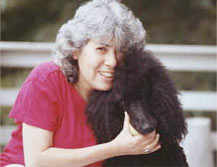A STRANGE PLACE TO CALL HOME: The World’s Most Dangerous Habitats & the Animals That Call Them Home by Marilyn Singer, illustrated by Ed Young (Chronicle Books, 2012)
Mystery, poetry, bold daring art, and scientific information about strange and weird creatures – what a wonderful mix of science and art!
Try this one – what creature is this? Thousands of these tiny living things are hatched in water or soil, but this particular cousin prefers OIL. What am I versing about? Petroleum flies… ugh.
Ok, here is another one. This creature flies but is the “salt of the earth.” Perhaps pink salt. That’s if they eat enough algae and brine shrimp:
“In saline lakes they stand (often on one long leg)
No grassy lawn, no dock.
FLAMINGOS find it grand.”
Imagine, this bird can take in salt water and then cry salty tears to get rid of a too-salty diet that would kill most other creatures.
Caldecott Medalist Ed Young’s super-sized collage illustrations fit the extreme animals and their habitats described in this collection of poems and illustrations. What a feast of information and images. OK, here is one more. Last verse from “Frozen Solid”:
If buried in the mud or sand,
If lurking in the deepest seas,
Why not beneath the glacial ice,
Helped by their own antifreeze?
What animal is this poem describing? Ice Worms, of course.

I asked Marilyn Singer how she ever came up with such a wonderful crazy idea – “extreme” poems about extreme creatures and their homes. Marilyn said:
“Hmm. It might have begun with seeing a real live dipper out west in a rushing stream and learning that this chunky little bird—America’s only aquatic songbird—not only catches its food underwater, but builds its nest in such difficult habitats on cliff ledges and behind waterfalls.
“Or maybe it was the group of snow monkeys I visited at the Central Park Zoo that live outdoors all winter long—and the documentary I watched which showed these primates bathing in hot springs on a freezing cold Japanese island, their natural habitat, to keep warm.
“Then again, it could have been the blind cave fish I saw at the Prospect Park Zoo. Fish in deep, dark caves? How do they navigate, I wondered. How do they survive?
“Once I found out about these animals, I wanted to discover other creatures that made their home and their livelihoods, as it were, in extreme environments. That’s when I plunged into research—and that’s how this book was born.
“I’ve never met an animal that didn’t fascinate me, so all of the ones in this book were interesting to research and to write about. I think the petroleum flies and the tube worms that live in the ocean depths around hydrothermal vents were the most surprising, and I probably got the most pleasure writing the villanelle about flamingos and the sonnet about mountain goats.
“To do the research, I read a lot of articles and books, watched documentaries, visited zoos, aquariums, preserves, parks, and some wild places. I also corresponded with or spoke to zoologists and other experts.
“I should add that I could’ve written a non-fiction book on the subject. I’ve done quite a few straight prose non-fiction works. But I love writing poetry, and there seems something so lyrical about the struggle to survive in these risky places. This book also gave me the chance to play with many poetic forms, something I like to do. My editor and I chose to present it as a poetry book without extensive back matter or a bibliography rather than an informational work—an impression Ed Young’s beautiful artwork enhances.
“My hope is that readers will want to do research on their own about these amazing creatures and about the strange places they call home and to marvel at nature’s incredible adaptability.”










